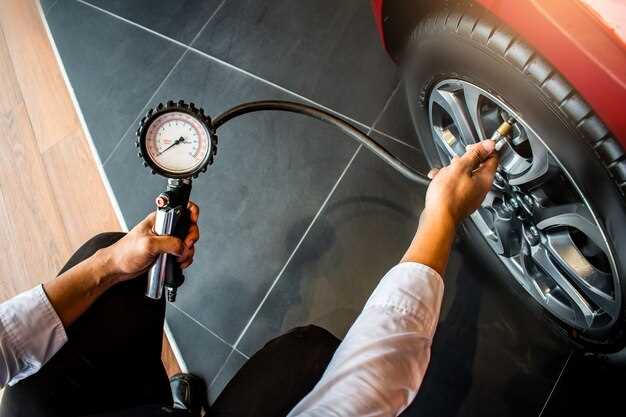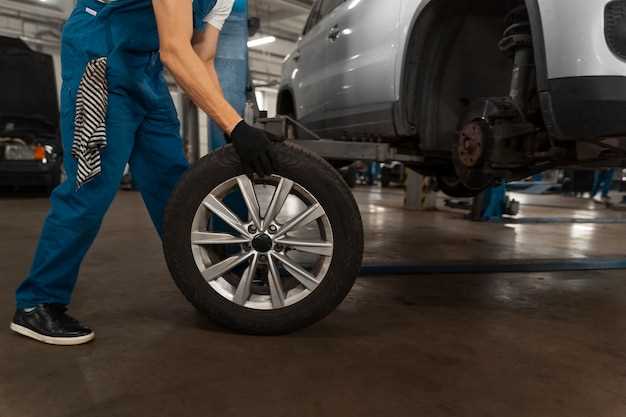
Maintaining optimal tire pressure is a critical factor that significantly influences the overall performance of a vehicle. How your vehicle handles under various driving conditions is directly affected by the inflation levels of the tires. Properly inflated tires ensure maximum contact with the road surface, enhancing stability, grip, and overall handling characteristics. When tire pressure deviates from recommended levels, both performance and safety can be compromised.
Understanding the relationship between tire pressure and vehicle performance is essential for any driver looking to enhance their driving experience. Under-inflated tires may lead to increased rolling resistance and can negatively impact fuel efficiency, while over-inflated tires may cause a harsher ride and reduced traction. Each scenario compromises handling, making it vital to regularly check and adjust tire pressure to align with manufacturer specifications.
This analysis delves into the multifaceted ways that tire pressure affects key performance metrics, including acceleration, braking distance, and cornering stability. By exploring these critical aspects, we aim to provide a comprehensive understanding of how tire maintenance can not only improve performance but also extend the lifespan of the tires and, ultimately, ensure a safer driving environment.
Optimizing Tire Pressure for Enhanced Handling and Stability

Maintaining the correct tire pressure is crucial for ensuring optimal vehicle performance, particularly in terms of handling and stability. Properly inflated tires provide better contact between the tire and the road surface, which directly influences the vehicle’s responsiveness to steering inputs and overall stability during dynamic driving conditions.
Under-inflated tires can lead to excessive flexing of the sidewalls, resulting in a larger contact patch but poorer handling precision. This can compromise cornering capabilities and increase braking distances, posing safety risks. Conversely, over-inflation can reduce the tire’s contact area, diminishing traction and making the vehicle feel skittish during turns. Consequently, achieving the manufacturer-recommended tire pressure is essential to ensure a balanced performance.
Regularly checking and adjusting tire pressure helps drivers optimize handling characteristics. Factors such as load, temperature, and driving conditions may necessitate slight adjustments to achieve peak performance. For instance, a slightly higher pressure may be beneficial for spirited driving on dry roads, while slightly lower pressure might improve grip in adverse weather conditions.
Additionally, proper tire pressure contributes to even tire wear, prolonging the lifespan of the tires and enhancing the overall driving experience. Consistent monitoring and adjustments based on the driving environment aid in maintaining the vehicle’s stability and handling dynamics. In summary, optimizing tire pressure is a vital component in achieving enhanced handling and stability, directly affecting safety and driving enjoyment.
Assessing the Relationship Between Tire Pressure and Fuel Efficiency
The tire pressure in a vehicle plays a crucial role in determining fuel efficiency. Properly inflated tires ensure an optimal contact patch with the road, enhancing the vehicle’s handling characteristics. When tire pressure is too low, the increased rolling resistance leads to additional energy consumption, directly impacting fuel economy.
Research shows that for every 1 psi drop in tire pressure, fuel economy can decrease by approximately 0.2%, highlighting the importance of regular pressure checks. Consequently, maintaining the recommended tire pressure not only supports safety by improving handling but also promotes better fuel efficiency.
Under-inflated tires tend to flex more while driving, generating extra heat and causing a greater exhaust output. This inefficiency translates into more frequent visits to the fuel station. Conversely, over-inflated tires can also pose risks, including reduced grip and an uncomfortable ride, ultimately affecting handling and driver confidence.
In summary, maintaining the correct tire pressure is essential for maximizing fuel efficiency. Drivers should regularly monitor their tire pressures, as this simple maintenance task can lead to significant economic and performance benefits.
Identifying Signs of Incorrect Tire Pressure and Their Effects on Performance

Maintaining the correct tire pressure is crucial for optimal vehicle performance. Incorrect pressure can lead to several noticeable signs that should not be overlooked. One of the most evident signs is uneven tire wear. If tires are under-inflated, the edges will wear out more quickly, whereas over-inflation can cause wear to the center of the tread. This irregular wear not only impacts the lifespan of the tires but also affects the vehicle’s handling.
Another indicator of improper tire pressure is a noticeable change in handling. Under-inflated tires can lead to a sluggish response when steering, making it difficult to navigate curves and corners effectively. This can result in a decrease in overall control, especially in adverse weather conditions. Conversely, over-inflated tires may provide a stiffer ride, reducing the tire’s ability to absorb bumps in the road, ultimately affecting comfort and performance.
A drop in fuel efficiency is also a common consequence of incorrect tire pressure. Tires that are not inflated to the recommended levels create more rolling resistance, demanding additional power from the engine and thereby decreasing fuel economy. Drivers may notice more frequent visits to the gas station as a result of poor tire maintenance.
Additionally, the vehicle’s braking performance can be compromised due to incorrect tire pressure. When tires are not properly inflated, they may not maintain adequate contact with the road surface, leading to longer stopping distances and an increased risk of skidding during braking maneuvers. This can especially impact safety during emergency situations.
To ensure optimal performance, it is essential to regularly check tire pressure. Regular inspections can help catch potential issues before they become significant problems, maintaining not only the longevity of the tires but also ensuring a safer, more enjoyable driving experience.



